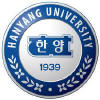|
Hanyang University Turbomachinery Laboratory Department of Mechanical Engineering |
|||
|
About Director (Dr. Keun Ryu) Current/Former Students Facilities Media Report Class Notes
Join the Dream Team!
(Graduate Research Assistant Positions):
Lab Intro to New Students Last revised: Nov. 01, 2020 |
|||
|
DME6035 Automotive
Turbochargers
• Office hours: By scheduled appointment (E-mail in advance required) - BorgWarner Turbo Systems Knowledge Library: http://www.turbos.bwauto.com/press/knowledgeLibrary.aspx - BorgWarner Turbo Systems Turbo Facts: http://www.turbos.bwauto.com/products/turbofacts.aspx
• Week 1
Introduction to class
References How a Turbocharger Works: https://youtu.be/JJ2U1GeLzS8
Turbo Teardown - How a Turbocharger Works
https://youtu.be/3ge8dPkvG-o
Introduction to Turbochargers and
Turbocharging:
Note 1 References ABB Turbocharging Operating turbochargers by ABB:
http://www.swiss-ships.ch/berichte-buecher/berichte/ABB_Turbo_Systems/TM_2005_100Y_EN.pdf https://library.e.abb.com/public/3a8a405f56da7489c1257b360029260b/ABBTC_BRO1000_WEMULTIPLYPOWER.pdf
Turbocharger Core Assembly (Compressor
Wheels):
Note 2-1
References How a turbocharger is made: https://youtu.be/G_139qEGXks
http://www.turbos.borgwarner.com/files/pdf/efr_turbo_technical_brief.pdf
Turbocharger Core Assembly (Squeeze
Film Dampers):
Note 2-3 References BorgWarner Build EFR 7163 Turbocharger - Full Video: https://youtu.be/s87LbgxKEPQ Turbocharger Core Assembly (Seals, Turbine Wheels, Thrust Bearings, Heat Shield): Note 2-4 Turbocharger Core Assembly (Development Case Study): Note 2-5
References Dual Volute Turbocharger https://youtu.be/r4RyEQGxyWI
• Week 6
References
Borg Warner K Series Turbo Animation
https://youtu.be/PB8FjZEXPrQ Turbocharger Performance Measurements: Note 3-2
Mid-term Project Presentation (Group 1) Mid-term Project Presentation (Group 2) Review of Mid-term Projects 2018 Fall: Turbocharger Rotordynamics Nonlinearity -Texas A&M Turbocharger Rotordynamics: Note 3-3
• Week 11 Balancing: Turbocharger CHRA balancing machine: https://youtu.be/Ecb9WZnhtos
• Week 12 Selecting a Centrifugal Compressor Practical Approach to Surge and Surge Control Systems Principles Of Operation And Performance Estimation Of Centrifugal Compressors Aerodynamic Design of Centrifugal Compressor for AT14 Turbocharger http://www.turboneticsinc.com/performance/sites/default/files/TN_2014_Catalog_MED_6.pdf
Matching the Engine and the
Turbocharger
Thermodynamics of turbochargers http://standards.sae.org/j1723_199508/ --> http://autoparts-standard.org/index/images/userfiles/media/SAE%20J1723-1995.pdf http://digitalcommons.calpoly.edu/cgi/viewcontent.cgi?article=1028&context=aerosp http://www.vortechsuperchargers.com/pdf/papers/efficiency_paper.pdf http://papers.sae.org/2007-01-2205/
Final Project Presentation (Group 2)
Final Project Presentation (Group 1)
Final exam
-------------------------------
Probs. 1 & 2. Turbocharger fundamentals
Brief History of Turbocharging
------------------------------- 2018 Fall: Personal Homework - About Electrically Assisted Turbochargers Q1) What are the-state-of-the-art configurations of electrically assisted turbochargers? Tips: Search patents (min. 3) & Search technical papers from ASME or SAE (min. 3) --> You MUST include comprehensive references!!! Q2) What are the benefits of electric turbocharging systems? Q3) What are their major technical hurdles for development process?
Electrically Assisted
Turbochargers |
|||
|
Copyright (c) 2020 Turbomachinery Laboratory at Hanyang University. All right reserved. |
|||
